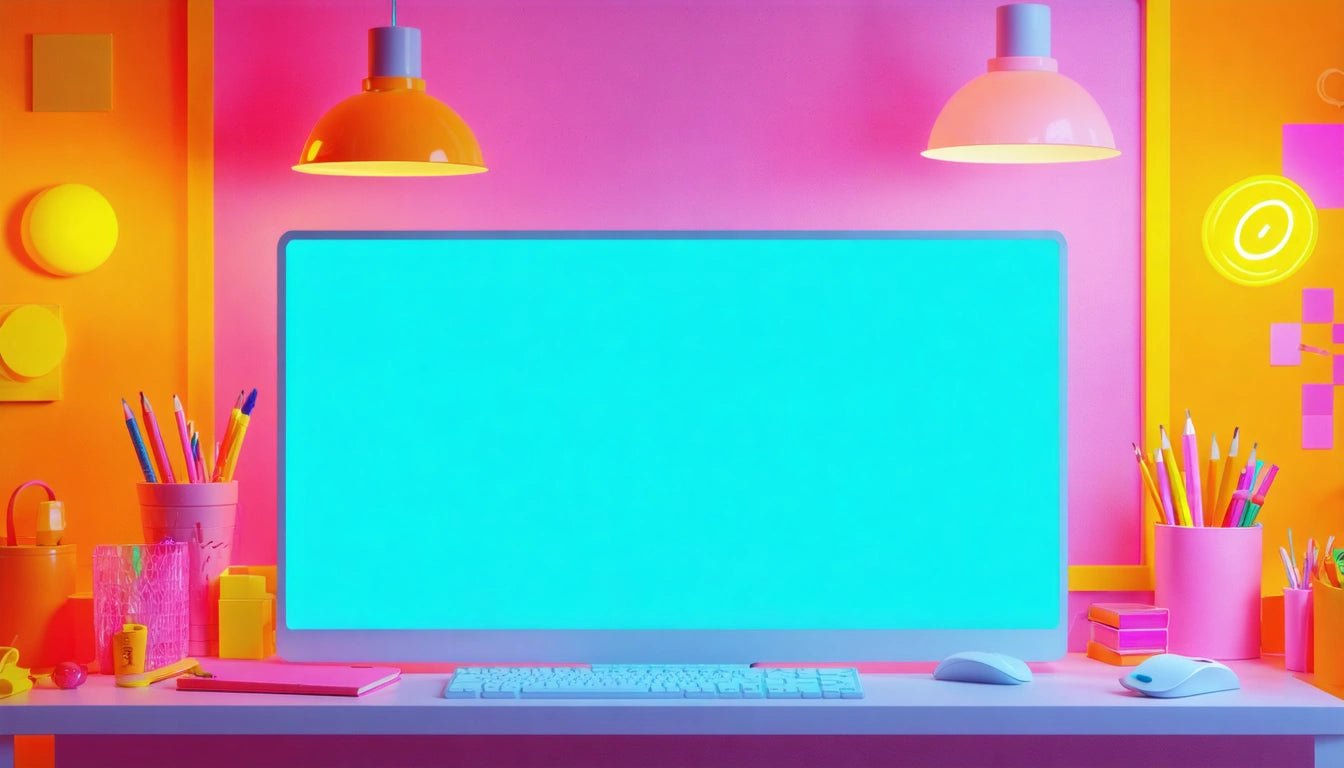Table of Contents
Understanding Neon Colors: Combinations and Characteristics
Neon colors captivate with their vibrant intensity and eye-catching glow. These ultra-bright hues stand out in any context, making them powerful tools for designers, marketers, and artists. But what exactly makes a color "neon," and how can these bold shades be effectively combined with other colors? This guide explores the world of neon colors, their characteristics, and how to create stunning combinations that maximize their visual impact.
What Are Neon Colors: Definition and Characteristics
Neon colors are fluorescent, highly saturated hues that appear to glow even without actual illumination. What is a neon color exactly? These colors are characterized by their high visibility, brightness, and intensity. Unlike standard colors, neon shades contain pigments that absorb ultraviolet light and re-emit it as visible light, creating that distinctive "glow" effect.
The main characteristics that define neon colors include:
- Higher luminance than standard colors
- Maximum saturation levels
- Fluorescent properties that create a visual "glow"
- High visibility, even from great distances
- Strong contrast against most backgrounds
These properties make neon colors particularly effective for attention-grabbing applications like high-visibility product packaging solutions that need to stand out on crowded retail shelves.
Popular Neon Colors and Their Properties
When asking "what colors are neon colors," several specific shades typically come to mind. The most common neon colors include:
- Neon Pink (hot pink with fluorescent properties)
- Neon Green (lime green with extreme brightness)
- Neon Yellow (fluorescent yellow with high luminance)
- Neon Orange (highly saturated orange with glowing properties)
- Neon Blue (electric blue with fluorescent qualities)
- Neon Purple (vibrant violet with heightened brightness)
Each of these colors creates different psychological effects and visual impacts. For instance, neon green tends to be the most visible to the human eye in daylight, while neon yellow has the highest luminance value, making it ideal for safety applications.
Neon Color Combinations That Work
Creating effective color schemes with neon colors requires careful consideration, as their intensity can easily overwhelm a design. The key is finding the right balance between impact and harmony.
What Colors Go With Neon Green
Neon green is one of the most popular fluorescent colors, but what color matches with neon green? Several options create striking combinations:
- Black: Creates maximum contrast and makes neon green pop
- White: Provides a clean backdrop that lets neon green shine
- Navy Blue: Offers a sophisticated contrast that tames neon green's intensity
- Gray: Serves as a neutral that balances neon green's vibrancy
- Purple: Creates a dynamic complementary color scheme
For more subtle pairings, you can explore perfect color combinations that incorporate muted tones alongside the neon accent.
What Color Goes With Neon Orange
Neon orange brings warmth and energy to any design. It pairs particularly well with:
- Teal: Creates a vibrant complementary contrast
- Navy Blue: Offers sophisticated balance to orange's brightness
- White: Provides breathing room and maximizes orange's impact
- Black: Creates dramatic contrast that emphasizes the neon quality
- Cobalt Blue: Forms an energetic, dynamic pairing
These combinations work well in contexts ranging from sports apparel to packaging design where standout visibility is essential.
What Colours Go With Neon Yellow
Neon yellow is the brightest of all neon colors and pairs effectively with:
- Charcoal Gray: Provides sophisticated contrast without the harshness of black
- Purple: Creates a vibrant complementary scheme
- Navy Blue: Offers classic contrast that feels both modern and timeless
- Black: Maximizes visibility and impact
- Teal: Creates a fresh, contemporary color scheme
For seasonal applications, consider how neon yellow can be incorporated into seasonal color palettes for spring and summer promotions.
Neon in Design and Packaging
Neon colors serve specific purposes in design and packaging. Their attention-grabbing nature makes them ideal for:
- Safety products and warning labels
- Youth-oriented packaging
- Sports and fitness branding
- Limited edition or special releases
- Products targeting high-energy or nightlife markets
When used in packaging, neon colors can significantly increase shelf visibility. Studies show that products with neon elements can capture consumer attention up to 70% faster than those using conventional colors.
For brands looking to make an impact, incorporating neon elements into packaging can be a strategic choice. However, it's important to consider color symbolism and meaning to ensure the chosen neon shade aligns with brand values and product positioning.
Practical Applications of Neon Colors
Beyond their aesthetic appeal, neon colors serve practical purposes across various industries:
Safety and Visibility: Construction workers, cyclists, and emergency personnel rely on neon colors for visibility. The question of what is a neon colour becomes particularly relevant in safety contexts, where specific neon shades are chosen for maximum visibility under different lighting conditions.
Marketing and Advertising: Neon colors naturally draw attention, making them effective for sales tags, promotional materials, and limited-time offers.
Fashion and Trend Cycles: Neon colors periodically surge in popularity, as seen in recent trending color cycles. Brands like Tesla have even experimented with neon-adjacent colors in their product offerings, though what colors Tesla comes in typically remains more conservative than true neon shades.
Digital Design: On screens, neon colors create striking visual hierarchies and call-to-action elements that guide user attention effectively.
Understanding the practical applications of neon colors helps designers and marketers make strategic choices about when and how to incorporate these vibrant hues into their projects.
When working with neon colors, remember that a little goes a long way. Using neon as an accent rather than a primary color often yields the most effective results, creating focal points without overwhelming the overall design.



















